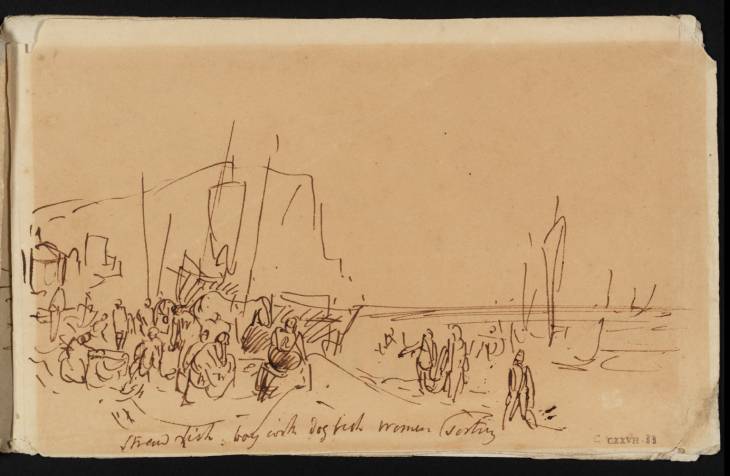1904
E.T. Cook and Alexander Wedderburn eds., Library Edition: The Works of John Ruskin: Volume XIII: Turner: The Harbours of England; Catalogues and Notes, London 1904, pp.258 no.42, 634 no.536, as one of two ‘Memoranda of Coast Scenery’.
1909
A.J. Finberg, A Complete Inventory of the Drawings of the Turner Bequest, London 1909, vol.I, p.359, CXXVII 33, as ‘Another memorandum of coast scenery’, following Tate D09010 (Turner Bequest CXXVII 32), described as ‘[p]robably a scene at Scarborough’.
1974
Gerald Wilkinson, The Sketches of Turner, R.A. 1802–20: Genius of the Romantic, London 1974, reproduced p.139, with transcription.
1980
David Hill, Stanley Warburton, Mary Tussey and others, Turner in Yorkshire, exhibition catalogue, York City Art Gallery 1980, p.16, as possibly a Dover subject.
1991
Horst Koch, William Turner, Kirchdorf/Inn 1988, trans. Stephen Gorman, London 1991, reproduced p.79.

